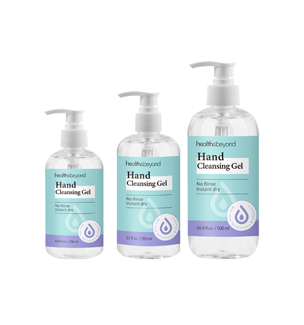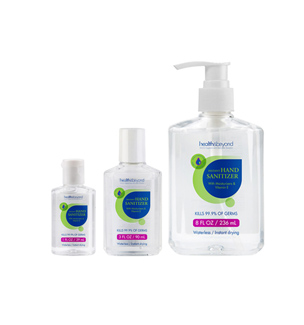When people think of hand sanitizer, they usually think of the standard gel they see in the doctor's office, the teacher's classroom, or the neighborhood grocery shop. It's what they often see in public places and therefore what they are most familiar with.
But gel isn't the only form. There are liquids, foams, wipes, and sprays, and each has its own unique advantages and disadvantages when it comes to PPE equipment. The two most common types of hand sanitizer are gels and liquids, but how do they differ? Is there a situation or application where one is preferable to the other?
Gel hand sanitizers vs liquid hand sanitizers
A gel hand sanitizer is a hand sanitizer with a thicker, almost jelly-like consistency - hence the name gel. Liquid hand sanitizers, on the other hand, are much closer to the consistency of water. Due to the alcohol content and the unique production methods of the manufacturing companies, you may find some bubbles in both antibacterial mixtures. Depending on the additives, both sanitizers can be clear or almost any colour in the rainbow. Blue, yellow, purple, and so on.
Gel Hand Sanitizer
In terms of set-up, you can usually find both hand sanitizers in busy healthcare settings such as clinics, as both are easily transferred from wall-mounted dispensers. This is a huge benefit for doctors, patients and visitors alike. The average consumer often prefers the gel form as it is easier to dispense without spilling everywhere. This makes it the preferred choice for protection on the go, or even when you are relaxing at home.
What do gel and liquid hand sanitizers have in common?
When it comes to the effectiveness of gel or liquid hand sanitizers, they are on almost equal footing. It really boils down to the right application. According to the CDC, you need to apply the entire surface of your hand correctly and then rub the product into your skin and nails until your hands are completely dry. This usually takes about 20 to 30 seconds.
In addition, the alcohol content of the sanitizer is something you should be aware of.
A good hand sanitizer should contain alcohol.
It is important to note this because there are many brands that market alcohol-free sanitisers. Your sanitiser will only be effective against germs if it contains at least 60% alcohol. You can find both gel and liquid sanitizers that meet this requirement.
FDA Approved Hand Sanitizer
The difference between gel and liquid hand sanitizers
As several studies on hand sanitizers have established, there are some significant differences between the gel and liquid forms. Gels tend to take about 30 seconds before bacteria and viruses are completely eliminated, while liquids usually take about half that time. However, this delayed action of the gel gives you enough time to completely cover your hands in the sanitizer so that the product can be used to its full potential.
Liquids have a low viscosity and are therefore very fluid. Studies have shown that gels are often preferred over liquid disinfectants as they are usually less smelly and more portable, among other benefits. Therefore, the fact that there are more gel hand sanitizers than liquids makes sense.
In the end, the differences between gel and liquid hand sanitizers really don't affect their superpower to fight germs. If you wish to decide between the two, consider the reason you need the product and when you plan to use it. That way, you can weigh up the pros and cons of either type and choose the one that suits you best.
At Health & Beyond, we understand that many different situations and needs may arise throughout your day. That's why we offer a wide range of hand sanitizer options. Whether you need more information, samples, or a quote, we would be delighted to talk to you. For more details, contact us now.

